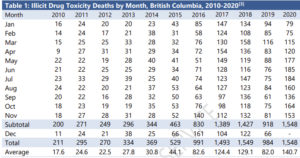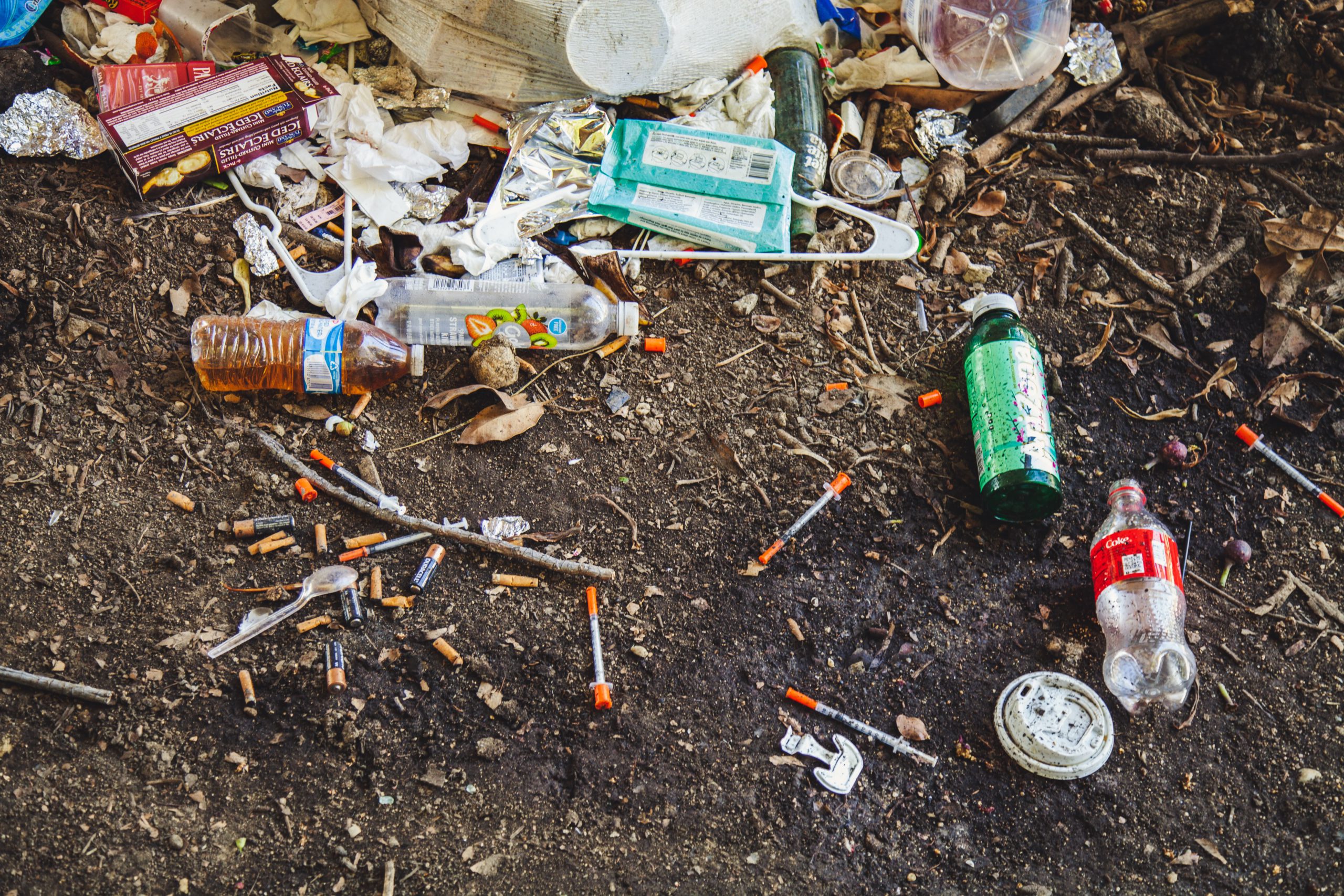The BC Coroners Service has announced that last month saw an 89 percent increase in drug toxicity deaths (153) compared to last November (81).
There have been 1,548 illicit drug deaths to date in BC this year. The province said the deaths in each health authority are at or near the highest-ever monthly totals.

“Tragically, as we reach the end of 2020, our province is facing a record-breaking year for lives lost due to a toxic illicit drug supply,” said Lisa Lapointe, Chief Coroner. “In the five years of this public health emergency, more than 6,500 families have experienced the grief and sadness of losing a loved one to the challenging medical condition of drug addiction. I extend my sincere condolences to all of those grieving a family member, friend or colleague due to this disease.”
Lapointe said there is a myth that the people dying from this health crisis are from a specific sector of the population, but that isn’t the case.
“It’s our neighbours, it’s our sons, our daughters, our moms, our dads, our colleagues, people from all professions; from healthcare and entertainment, and legal, you name it, we’re seeing people die,” said Lapointe. “We need a system of change, so it’s not going to be one thing. It’s not just going to be harm reduction measures, that will keep people alive, it will prevent them from dying if they overdose.”
Lapointe said, “We absolutely need a system of treatment and recovery, we don’t have one in this province,” said Lapointe. “To be fair, almost nobody does because the focus was on enforcement, so we had police and jails and courts, but what we didn’t have was a really evidence-based, accessible system of treatment and recovery. Without that, I don’t know how we’ll ever get over this crisis.”
She mentioned that it’s hard to keep a public health crisis in the public eye for five years and many people treat the pandemic with more caution than the opioid crisis.
“The public (I think sadly) have gotten used to hearing these numbers and there may be a tendency to think, ‘it’s somebody else, but it’s not me, and it won’t affect me,’ whereas the pandemic is a little bit different, people are much more cautious because they realize they could become infected in their next trip to the grocery store, maybe that’s part of it,” said Lapointe.
According to a provincial government release, toxicology results point to a greater number of cases with high concentrations of fentanyl from April to November.
The impacts of COVID-19 have been deadly for those experiencing problematic substance use,“ Lapointe said. “Ensuring access to critical harm reduction measures including naloxone, supervised consumption sites, overdose prevention sites and drug checking services are essential if we want to prevent future deaths. Providing those with substance use disorder access to pharmaceutical alternatives will be of immense benefit to reduce the harms and suffering resulting from the ‘for-profit’ illicit drug market.
Since the pandemic began in March, 1,279 people have died in the opioid crisis, compared to 713 due to the Coronavirus (including Monday’s numbers).
Key preliminary findings of these drug death reports follow. Data are subject to change:
- In November 2020, there were 153 suspected illicit drug toxicity deaths. This represents an 89% increase over the number of deaths in November 2019 (81) and a 7% decrease over the number of deaths in October 2020 (164).
- The number of illicit drug toxicity deaths in November 2020 equals about 5.1 deaths per day.
- In 2020, 70% of those dying were aged 30 to 59. Males have accounted for 81% of deaths in 2020 to date.
- The townships experiencing the highest number of illicit drug toxicity deaths in 2020 are Vancouver, Surrey and Victoria.
- Illicit drug toxicity death rates in males continued to increase in November 2020 while female rates have declined from October (see Figure 4, p. 8).
- Illicit drug toxicity death rates among individuals aged 19 to 59 have been trending downward over several months. However, rates among those aged 60 and over have been trending upward. Rates among those under 18 remain low (see Figure 6, p. 10).
- Island Health illicit drug toxicity death rates have been trending downward over the past several months. However, all other health authority rates remain high (see Figure 7, p. 13).
- Fentanyl or its analogues have continued to be detected in over 80% of illicit drug toxicity deaths in 2020. Cocaine and methamphetamine are the next most commonly detected drugs.
- In 2020, 55% of illicit drug toxicity deaths have occurred in private residences.
- No deaths have been reported at supervised consumption or drug overdose prevention sites.






